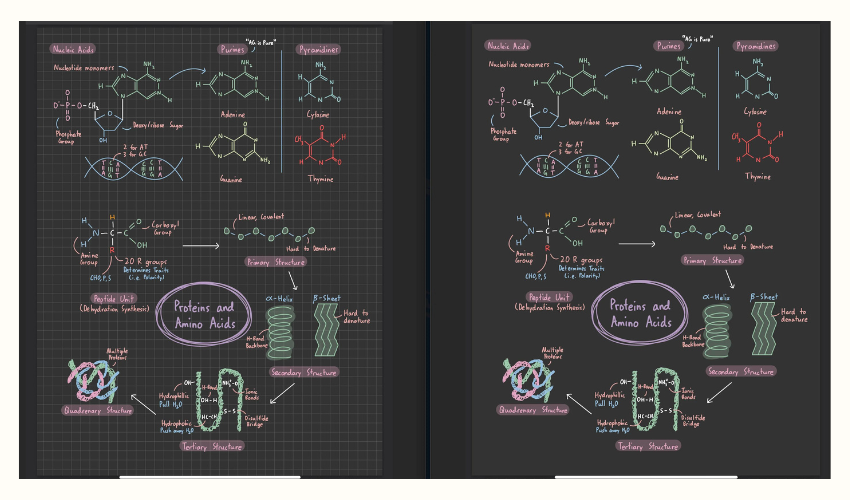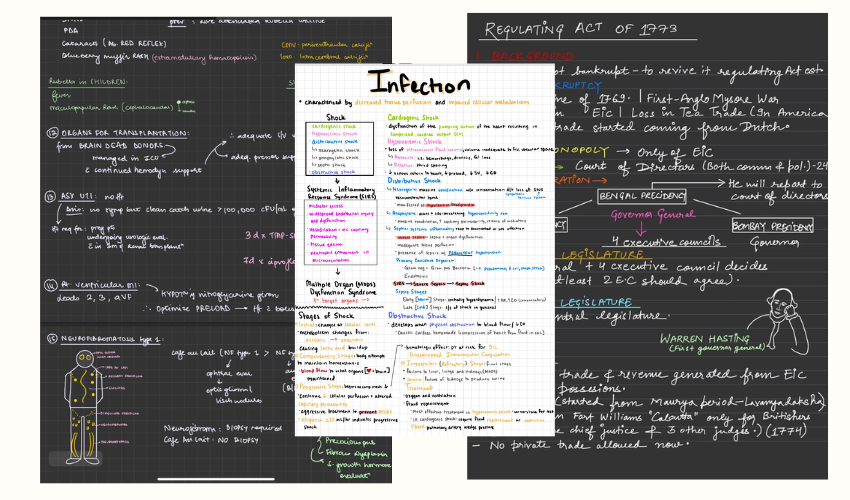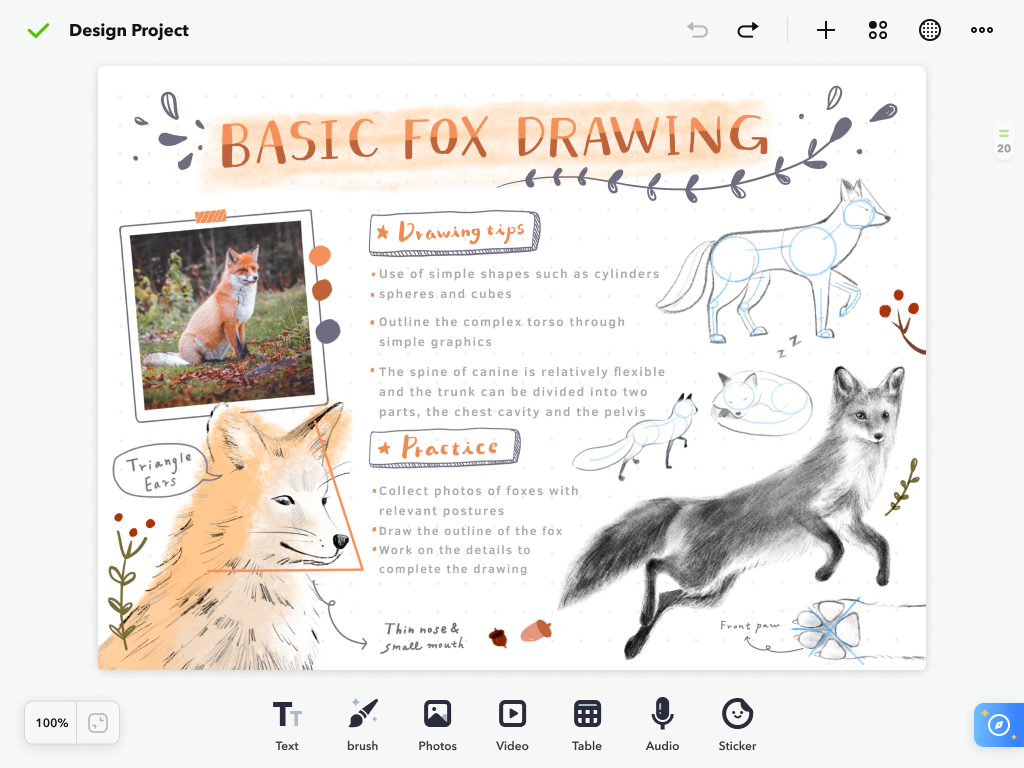[Latest Guide] How to Make Aesthetic Notes?

1. What are Aesthetic Notes?
In the realm of academia and personal development, aesthetic notes have emerged as a creative and effective way to transform mundane information into visually engaging masterpieces. Aesthetic notes go beyond the traditional black-and-white approach of jotting down information; they are a fusion of art and cognition. These notes incorporate various visual elements such as colors, illustrations, symbols, and even calligraphy to convey information in a more dynamic and memorable way.

Aesthetic notes are a personal expression of understanding and interpretation, turning the act of note-taking into a visually stimulating experience. The goal is not just to capture information but to create a visual narrative that enhances comprehension, retention, and recall.
2. Why Make Aesthetic Notes?
The benefits of making aesthetic notes extend far beyond their visual appeal. The process of creating aesthetically pleasing notes is a strategic endeavor that engages the mind in a unique manner. Here are some compelling reasons to embrace the art of aesthetic note-taking:
Enhanced Cognitive Engagement
Aesthetic notes require careful consideration of content, structure, and design. This cognitive engagement promotes active learning, helping individuals to process and internalize information more effectively.
Improved Comprehension and Retention
The visual elements in aesthetic notes serve as anchors for memory. Color coding, illustrations, and diagrams make it easier to understand complex concepts and enhance long-term retention.
Facilitates Efficient Review
The visually organized nature of aesthetic notes makes them ideal for quick review sessions. Visual cues act as triggers, helping individuals recall information effortlessly during exams or discussions.
Personalized Learning Experience
Aesthetic notes allow for personalization and creativity. When individuals infuse their unique artistic touch into their notes, the information becomes a part of their personal narrative, fostering a sense of ownership and making the learning process more enjoyable.

Encourages Active Participation
The act of creating aesthetically pleasing notes transforms note-taking from a passive task to an active, participatory experience. This engagement with the material promotes a deeper understanding of the subject matter.
3. How to Make Aesthetic Notes?
Now that we understand the significance of aesthetic notes, let’s delve into the practical aspects of creating them. Here’s a step-by-step guide to help you embark on your journey of turning ordinary notes into visually stunning works of art:
Select Your Tools:
-
Invest in quality pens, markers, and highlighters in a variety of colors.
-
Consider using different fonts or practicing calligraphy for headings and key points.
-
Choose a notebook or paper that complements your style—whether it’s a blank page or one with subtle grids.
Organize Information:
-
Start by reviewing the material and breaking it down into key concepts.
-
Create a hierarchy of information, identifying main ideas and supporting details.
-
Use headings, subheadings, and bullet points to maintain a clear structure.
Incorporate Visual Elements:
-
Experiment with different fonts, sizes, and styles for headers and text.
-
Integrate icons, symbols, or doodles to represent concepts visually.
-
Utilize color coding to distinguish between categories or highlight important points.
Embrace Mind Mapping:
-
Use mind maps to visually connect ideas and relationships between concepts.
-
Draw arrows, lines, or branches to illustrate connections and dependencies.
-
Place the main idea at the center and radiate related concepts outward.
Add Illustrations and Diagrams:
-
Include relevant illustrations, graphs, or diagrams to supplement textual information.
-
Create simple and clear visuals to aid in understanding complex topics.
-
Don’t be afraid to get creative with sketches or diagrams to enhance engagement.

Experiment with Layout:
-
Play with different layouts and formats to find what works best for you.
-
Consider using whitespace strategically to enhance readability and clarity.
-
Balance text and visuals to create a harmonious and organized page.
Regularly Review and Revise:
-
Periodically revisit your notes to reinforce learning and make any necessary revisions.
-
Add new information, clarify points, or update visuals based on your evolving understanding.
-
Use the review process as an opportunity to reinforce concepts and improve note-taking techniques.
4. Best Tools to Make Aesthetic Notes
While the tools for creating aesthetic notes can be simple and accessible, certain digital tools can elevate the experience and offer additional features. Here are some popular tools that cater to the aesthetic note-taking aficionado:
NoteLedge

NoteLedge is a versatile digital note-taking application that serves as a dynamic canvas for creating visually engaging and organized notes.
It provides users with the flexibility to choose from various paper styles, incorporate a consistent color scheme, and utilize intuitive pen tools for highlighting key ideas and adding vibrant details.
Whether users prefer typed or handwritten notes, NoteLedge caters to both preferences, allowing for a seamless and customizable note-taking experience.
Notion
Notion is an all-in-one workspace that allows users to create aesthetically pleasing notes, tables, and databases.
It offers a variety of templates and customization options to suit individual preferences.
Notion’s flexibility makes it a versatile tool for creating organized and visually appealing notes.
GoodNotes (for iPad)
GoodNotes is a note-taking app designed for iPad users, allowing for the creation of digital handwritten notes.
It provides a realistic pen-and-paper experience, enabling users to incorporate sketches and illustrations seamlessly.
GoodNotes supports various file formats and offers features like searchable handwriting.
OneNote
Microsoft OneNote is a digital note-taking app that integrates seamlessly with the Microsoft Office suite.
It supports free-form note-taking, making it easy to create visually rich and organized notes.
Users can insert images, drawings, and diagrams, enhancing the overall aesthetic appeal.
Canva
Canva is a graphic design platform that offers templates specifically designed for note-taking and organization.
It provides a user-friendly interface with drag-and-drop functionality for creating visually stunning notes.
Canva’s extensive library of design elements allows for endless customization.
Adobe Spark
Adobe Spark is a multimedia creation tool that enables users to design visually appealing graphics and presentations.
It offers a range of templates for note-taking, allowing for customization with various fonts, colors, and layouts.
Adobe Spark’s collaboration features make it a suitable choice for group projects or shared notes.
5. The Bottom Line
The art of aesthetic note-taking transcends the conventional approach to capturing information. It is a dynamic and engaging process that not only enhances comprehension and retention but also transforms the act of learning into a visually stimulating experience. By embracing creativity and utilizing the right tools, individuals can elevate their note-taking skills and embark on a journey of knowledge acquisition that is both effective and aesthetically pleasing.
